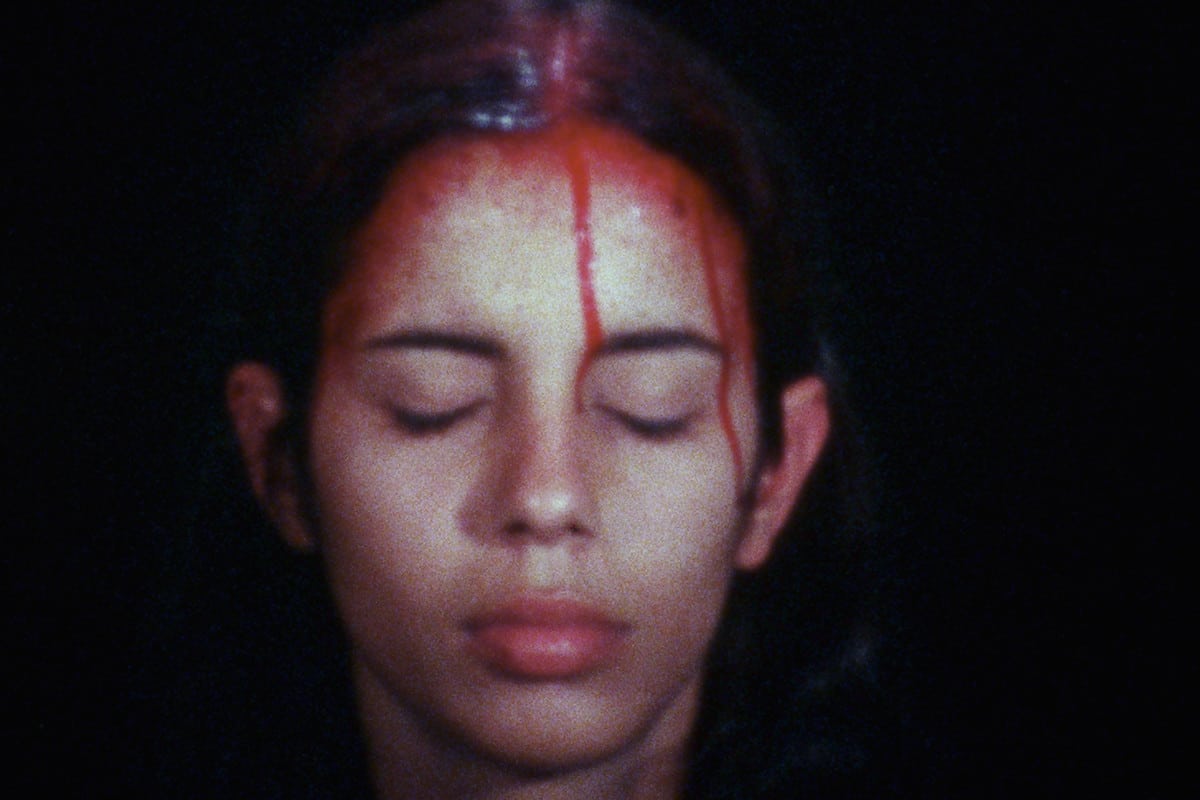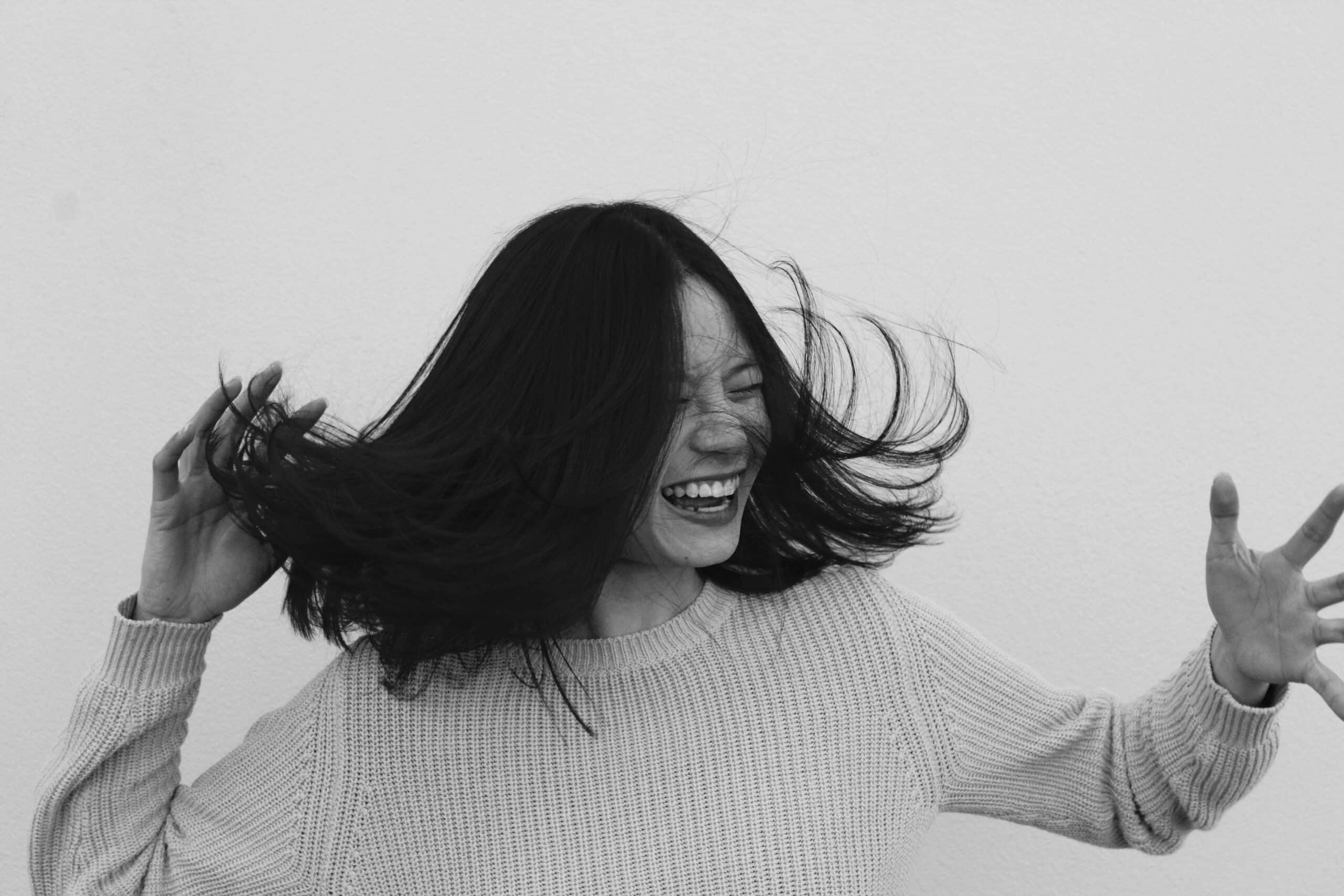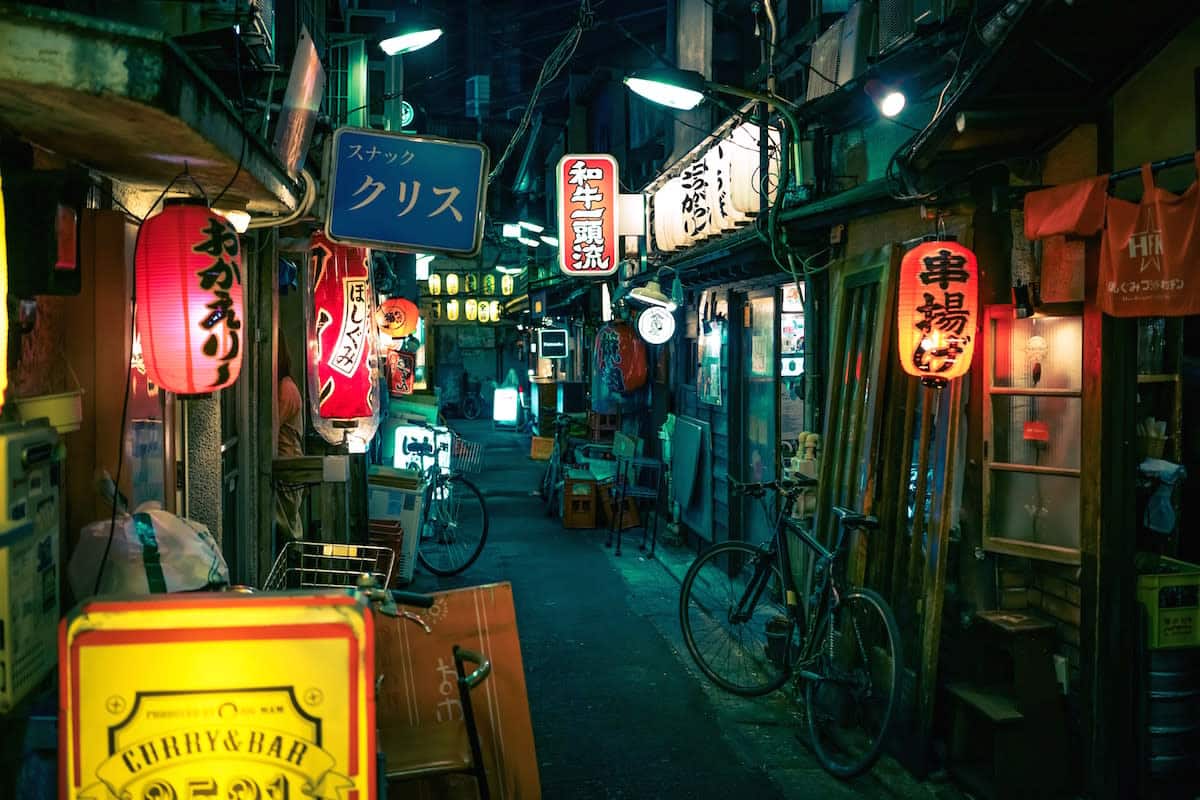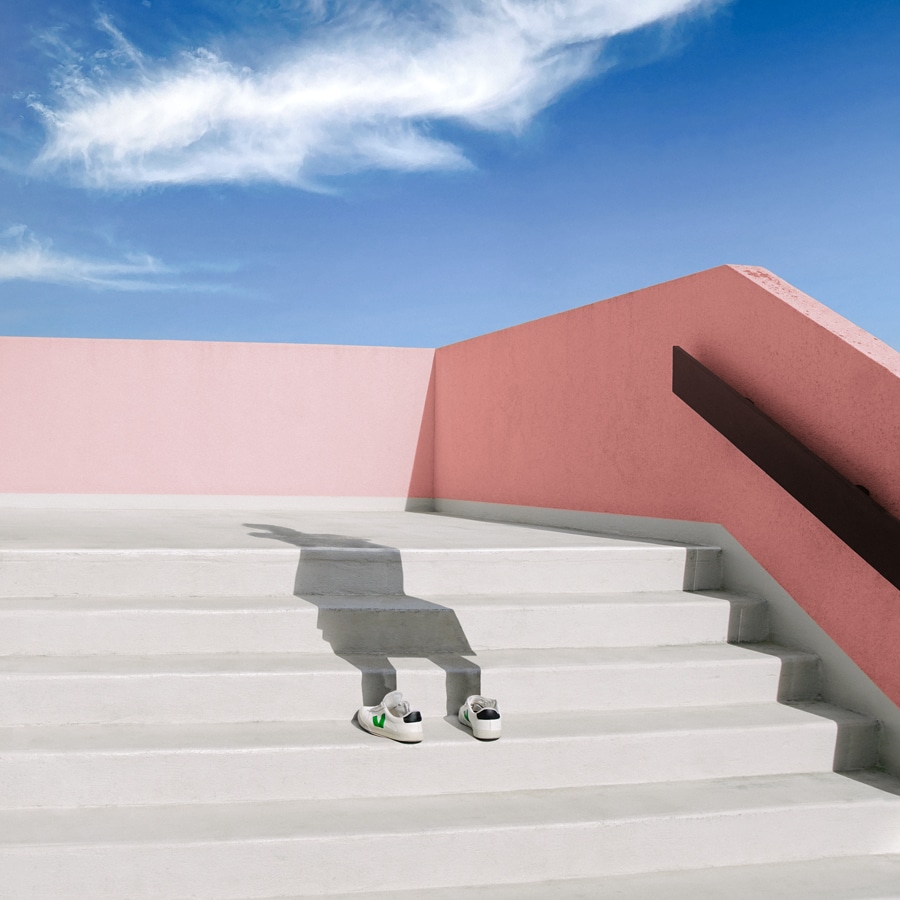The artist Ana Mendieta, who died in 1985 at the age of 36, would have turned 70 this year. Yet there is something about her work which makes it feel increasingly relevant. Mendieta’s work focused on nature and the body, working with materials like blood, water, and earth to create brief and haunting human silhouettes in natural space, which the artist documented using photography and video.
A number of popular exhibitions in the past few years have highlighted the continuing resonance of the Cuban-American artist’s work, most recently Covered in Time and History: The Films of Ana Mendieta, which is currently showing at the Martin Gropius Bau in Berlin until July 22, 2018.
This exhibition was first shown in 2015 at the University of Minnesota in Minneapolis, and the 23 films it presents are the result of several years of digitization and restoration, a joint research project undertaken by the Estate of Ana Mendieta Collection, Galerie Lelong & Co., and the University of Minnesota. Shot mostly on Super 8, in the period between 1971 and 1981, these films offer a clearer, more intimate perspective on Mendieta’s work than has previously been available to the public; some of these filmworks (as the artist called them) have never been publicly exhibited before.
Outside of shows like these, it is still difficult to view Mendieta’s work. For many viewers, photographs have been the easiest way to view and understand her art. On YouTube, a low-quality video of Mendieta’s 1974 work Blood Sign can be found; judging from the background noise, this is a recording taken at an event or show where the film was shown. With gallery exhibits offering the only real chance to see Mendieta’s films, these works take on a kind of mysterious quality.
In an interview with Vice, Raquel Cecilia, Mendieta’s niece and associate administrator for the Estate of Ana Mendieta Collection, described the opening at the Martin Gropius Bau as packed with people, adding that “There was a line down the street to get in.” Perhaps the inaccessibility of much of Mendieta’s work contributes to contemporary interest in the artist. As so many contemporary artists feel pressure to document their work for online presentation, and to market themselves on social media, Mendieta’s work (as is the case with many artists who are no longer living) exists in a separate space. More importantly, though, her work speaks to themes of identity and belonging which are more relevant than ever—especially given her perspective as a person in exile from her home country, and as a woman of color working to establish herself in a male-dominated art scene.
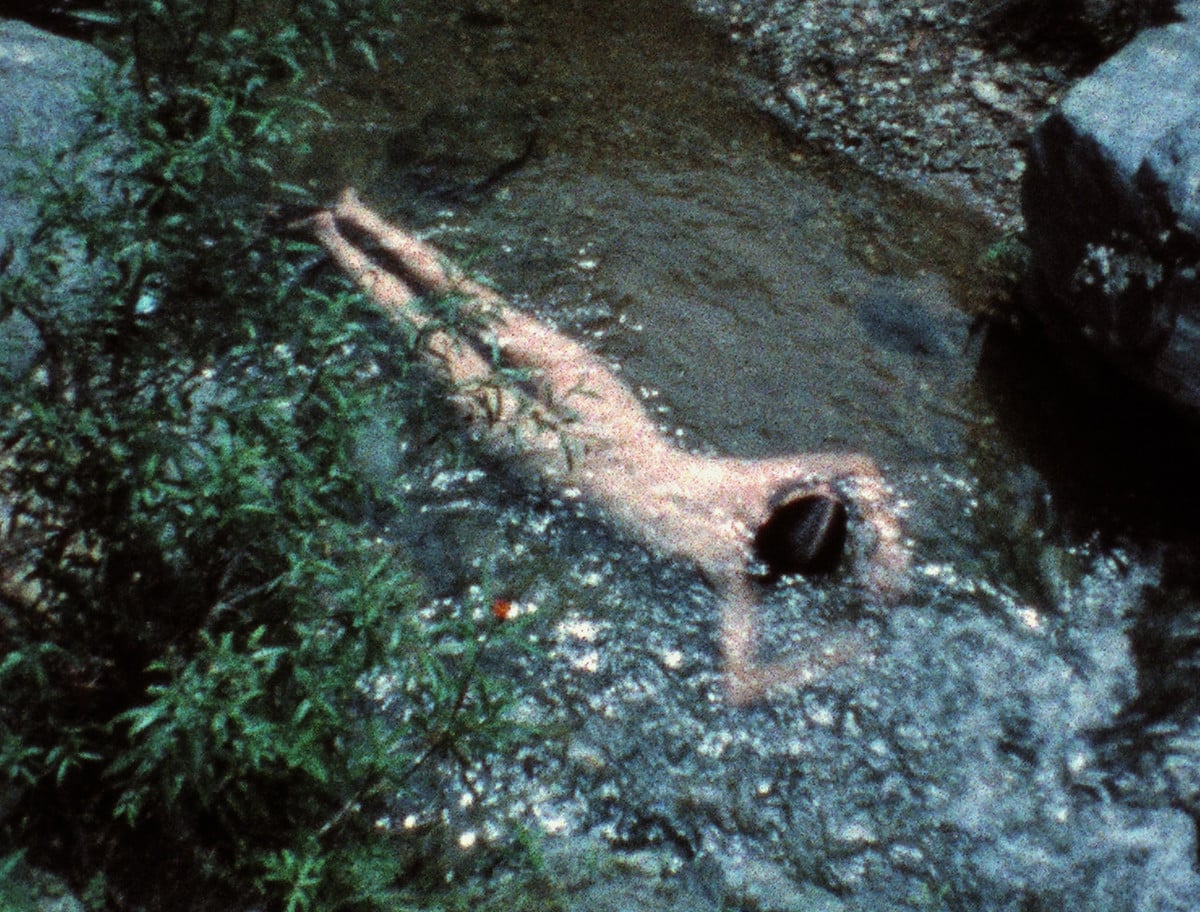
Ana Mendieta, Creek, 1974. Super 8 film, colour, silent. Still from The Estate of Ana Mendieta Collection, LLC., Courtesy Galerie Lelong & Co.
Mendieta is perhaps best known as a performance artist and a land artist, but she did not use these labels herself. Though she also did not consider herself a filmmaker or a photographer, the still and moving images she made to record her work are clearly important parts of her practice. Mendieta purposefully avoided categorizing her work, and especially rejected being grouped with other land artists of the time, criticizing Robert Smithson, for example, as “brutalizing” nature. Rather than making work that acted upon nature, Mendieta worked within it.
In an essay for the catalogue of Traces, a 2013 retrospective of her work at Hayward Gallery in London, Stephanie Rosenthal quotes Mendieta: “My work is basically in the tradition of a Neolithic artist. It has very little to do with most earth art. I’m not interested in the formal qualities of my materials, but their emotional and sensual ones.” In her later work, Mendieta later moved away from using her own body, and began instead to focus on silhouette forms created from natural materials, for example fire or dirt, afterimages of her body that could remain in the earth after the piece was finished, leaving a subtle, impermanent mark on their surroundings.
After her early death, a tragedy for which we may never receive a real explanation, interest in Mendieta’s work has only increased, rather than faded. In the past few years in particular, Mendieta’s work has been generating renewed interest; in 2017 alone, her work appeared in 28 exhibitions. The Museum of Latin American Art in California is currently showing an exhibition dedicated to Mendieta, featuring five artists who have been inspired by her work. In Cuban Art News, MOLLA curator Edward Hayes said of Mendieta’s enduring appeal that, “Marginalized lands and bodies continue to be battlegrounds, and I think Mendieta’s work still speaks to a yearning for a deeper sense of self and belonging.”
The Martin Gropius Bau similarly points to “the experience of personal, cultural, and political displacement” as a central reason for why Mendieta’s work remains relevant today. The filmworks on display in Covered in Time and History underscore this by offering a wide-ranging survey of Mendieta’s practice in the 1970s and 80s, beginning with her early filmworks in Iowa and Mexico, and culminating in some of her last filmworks, created in Cuba. Mendieta left Cuba in 1961; her father was politically active as a counter-revolutionary and feared for her safety. Although Mendieta spent time in the United States, Mexico, and Italy, and felt especially at home in Rome, her Cuban background always remained important to her and was influential in her work. “Although the culture in which I live is part of me, my roots and cultural identity are a result of my Cuban heritage,” Mendieta wrote in undated notes found in her archives.
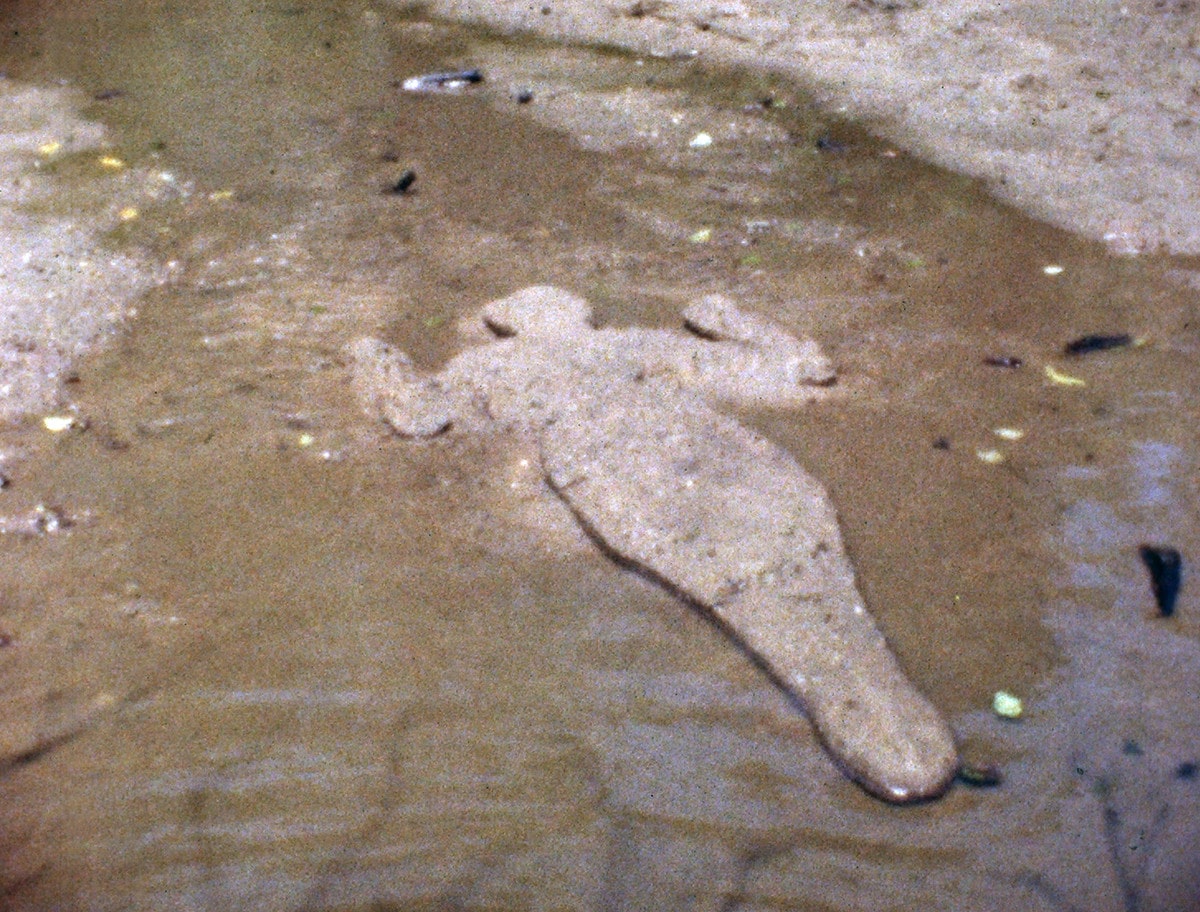
Ana Mendieta, *Silueta de Arena*, 1978. Super 8 film, colour, silent. Still from The Estate of Ana Mendieta Collection, LLC. Courtesy Galerie Lelong & Co.
The title of Covered in Time and History is also taken from a quote from the artist: “In 1973 I did my first piece in an Aztec tomb that was covered in weeds and grasses—that growth reminded me of time. I bought flowers at the market, lay on the tomb, and was covered with white flowers. The analogy was that I was covered by time and history.” That work, which is part of her Silueta series, is not on view in the exhibit, but there are other works included which show the artist covering herself: with rocks, as in Burial Pyramid (1974), or blood, as in Blood Inside Outside (1975). Both of these filmworks, created respectively in Yagul, Mexico, and Sharon Center, Iowa, seem to depict violence, but considered in the larger context of Mendieta’s work they evoke more complex feelings, a mix of fear and power, fragility and strength.
In Burial Pyramid, Mendieta is seen buried beneath a pile of stones, and over the course of the three-minute film, her chest rises and falls, and the stones gradually slide off her. It’s a process that seems to show immense effort, as though the artist has just barely escaped being buried alive. In Blood Inside Outside, which is shown publicly for the first time in this exhibition, Mendieta methodically covers herself with bright red blood. “I think it’s a very powerful, magical thing. I don’t see it as a negative force,” Mendieta said of blood, in a 1980 article in The Village Voice.
As with many of Mendieta’s works, these performances look like rituals, as though the artist is not just engaging with nature but actually becoming part of it, dissolving into the earth, becoming part of its history, like the silhouette figures in her later works. Mendieta did not preserve her earth-based works; she wanted them to gradually fade, so that people might eventually come across their traces and wonder what they were. If it weren’t for the restoration of her filmworks, they might also fade gradually away, but continuing interest in Mendieta’s work has helped to ensure its preservation.
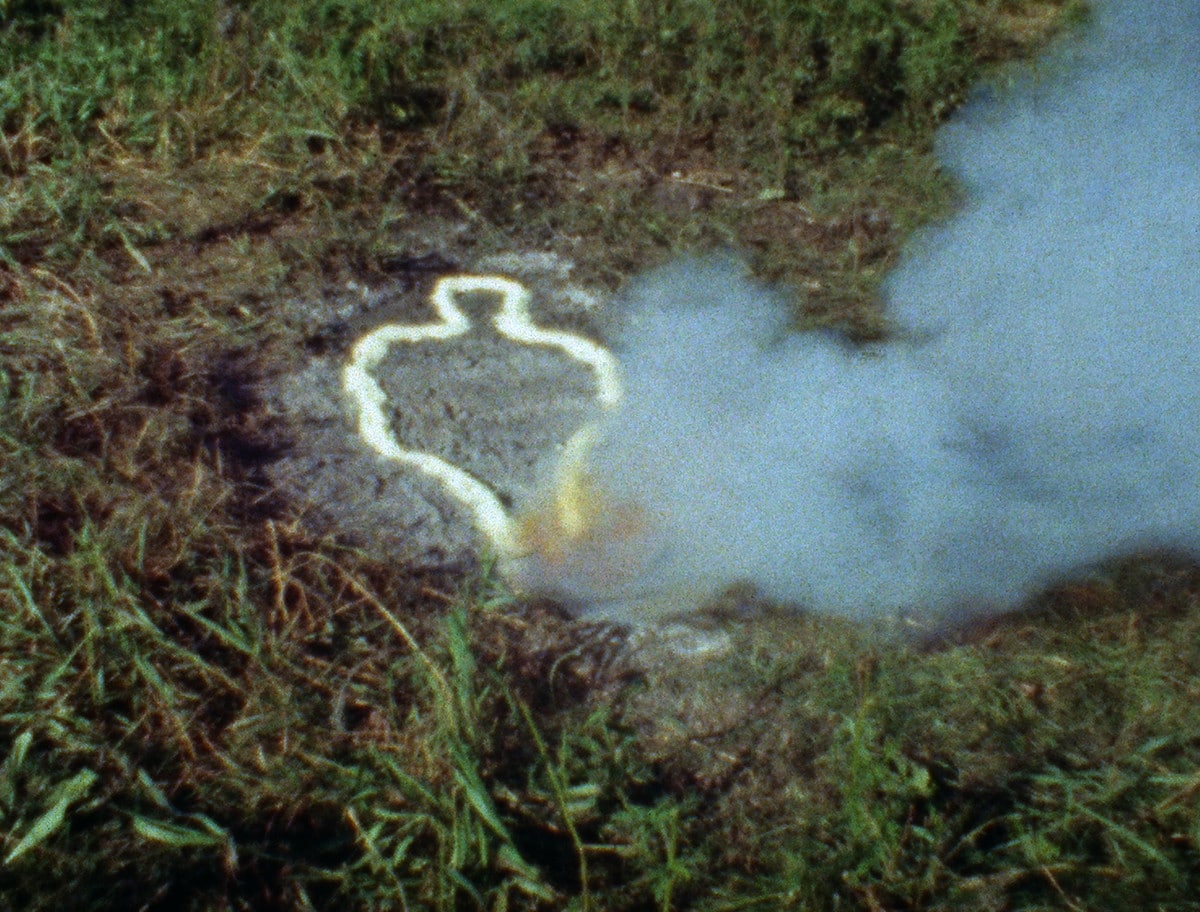
Ana Mendieta, Untitled: Silueta Series, 1978. Super 8 film, colour, silent. Still from The Estate of Ana Mendieta Collection, LLC. Courtesy Galerie Lelong & Co.
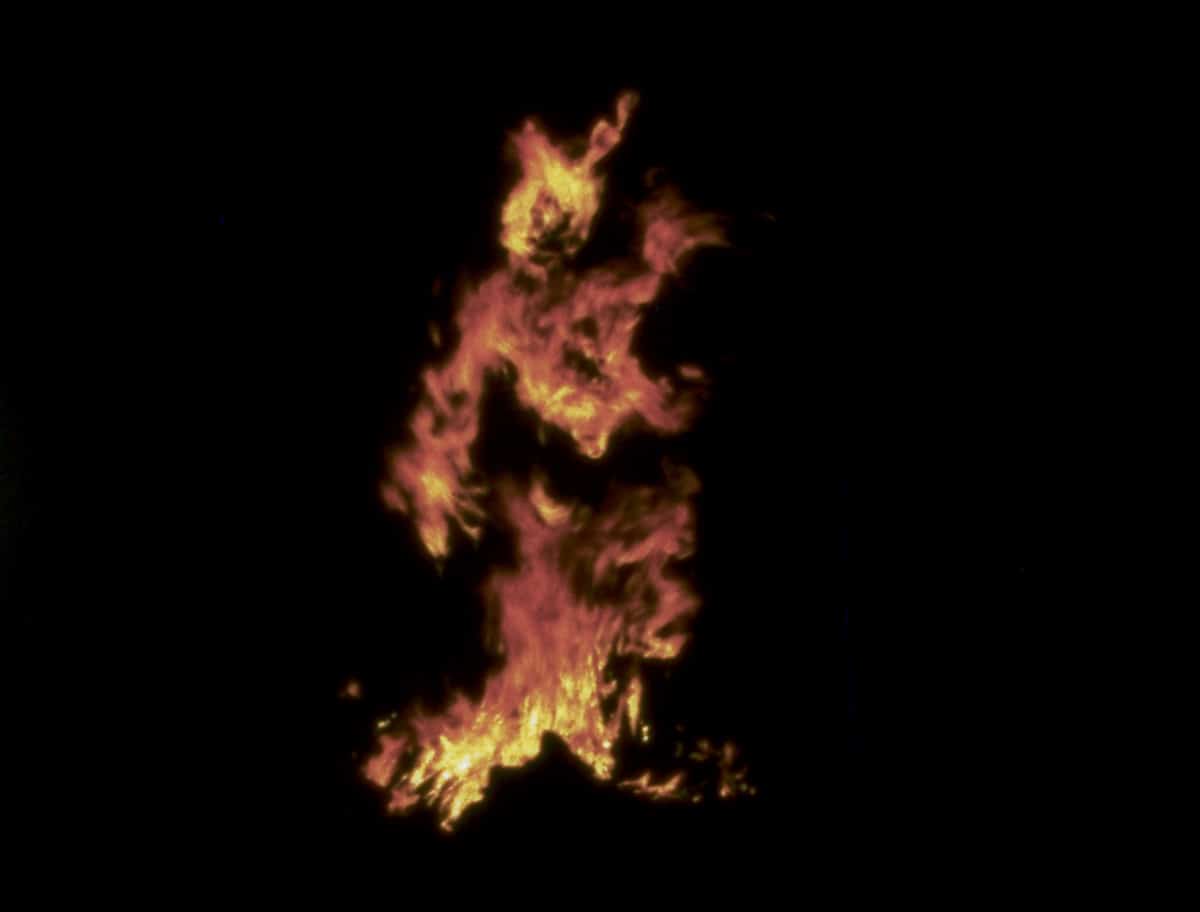
Ana Mendieta, Untitled: Silueta Series, 1978. Super 8 film, colour, silent. Still from The Estate of Ana Mendieta Collection, LLC. Courtesy Galerie Lelong & Co.
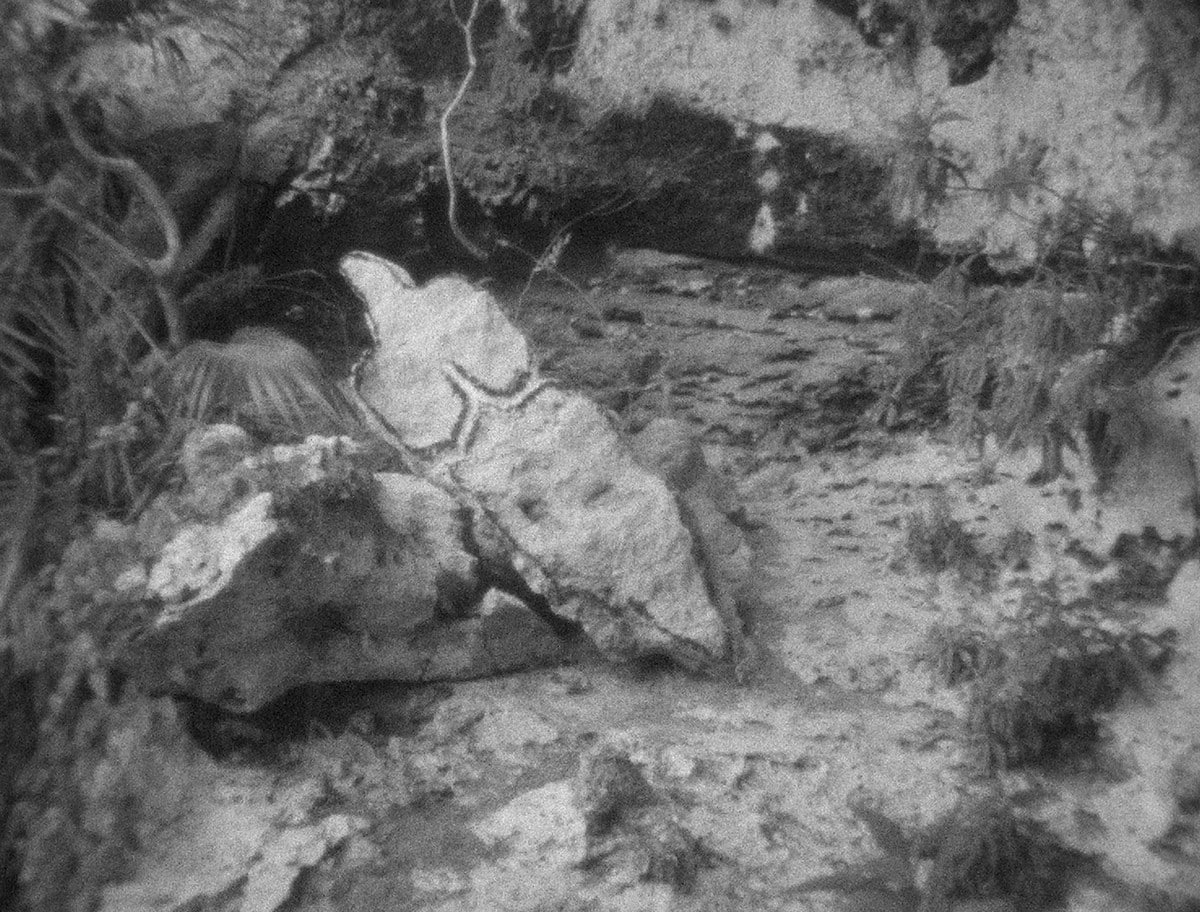
Ana Mendieta, *Esculturas Rupestres (Rupestrian Sculptures)*, 1981. Super 8 film, colour, silent. Still from The Estate of Ana Mendieta Collection, LLC. Courtesy Galerie Lelong & Co.
Cover image: Ana Mendieta, Sweating Blood, 1973. Super 8 film, color, silent . Still from The Estate of Ana Mendieta Collection, LLC. Courtesy Galerie Lelong & Co.
